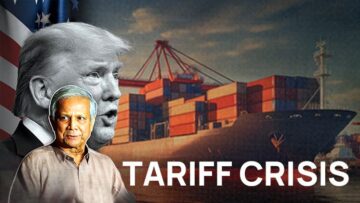
Despite Government efforts to regulate the trade of sacrificial animal hides during Eid, tannery owners and traders continue to face significant challenges as the market prices remain well below Government-mandated rates. Cow and goat skins are being sold at prices far lower than the fixed minimums, raising concerns over market management and fair pricing.
In Dhaka, cowhides are currently selling for between Taka 400 and Taka 750, depending on size, while outside the capital, prices range from Taka 300 to Taka 400. In contrast, the Government had set the minimum price for salted cow hides at Taka 1,350 in Dhaka and Taka 1,150 in other regions. Goat hides, meanwhile, are experiencing negligible demand this Eid.
Reports from various districts, including the Posta area in Dhaka, indicate that leather is not being sold at the Government-mandated prices anywhere in the country. Seasonal traders, who purchase hides from sacrificial animals, are paying between Taka 200 and Taka 500 per piece based on size, and selling these to tannery owners for Taka 600 to Taka 900. A large cow hide, typically 31-40 square feet, has a fixed price expectation of Taka 1,500 to Taka 1,625 in Dhaka, according to Government rates.
Tannery owners aim to collect between 8 and 8.5 million hides this Eid, most of which was gathered on the first day. While the volume of raw hides arriving has been satisfactory, traders complain that they are unable to secure fair prices, often selling hides at rates lower than last year.
Shaheen Ahmed, President of the Bangladesh Tanners Association (BTA), defended the current prices, stating, “The price of leather was quite stable this Eid. Good quality raw cow hides without salt sold for Taka 800 to Taka 900.” He added that the salted leather market has yet to commence but is expected to stay stable once it begins.
Traders also voiced dissatisfaction with the export process, claiming that only a handful of tannery owners have benefited, primarily due to China’s dominance in leather exports. They allege that Chinese buyers pay unfairly low prices, offering around US $ 1.50 for what should be a US $ 5 leather, thus discouraging fair trade practices and leading to losses for local traders.
Additionally, adverse weather conditions and political instability have impacted leather sales. Heavy rains during Eid have caused some leather goods to spoil, while fears of an uncertain political climate and high bank interest rates have further suppressed trading activity.
Commerce Adviser Sheikh Bashir Uddin asserted that the price of animal skins is higher this year than in previous years. Speaking during a briefing in Old Dhaka’s Posta area, he stated, “The price of skins is higher this year compared to past years. The Government is not responsible for the failure to receive fair prices for unsalted skins; market management will address this issue.”
He also downplayed concerns about the market, claiming that the lower prices for semi-rotten leather are natural and that misinformation about leather prices is being spread by social and mainstream media.
As the market grapples with these issues, industry stakeholders call for better management and fair trade practices to ensure that tannery owners and traders can benefit equitably from this Eid season.






